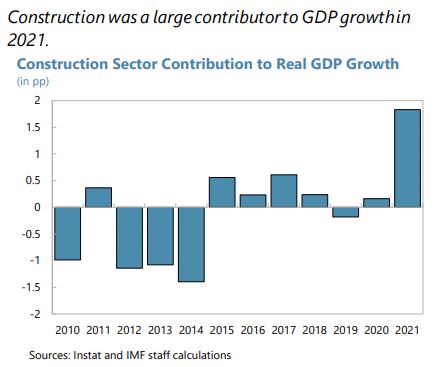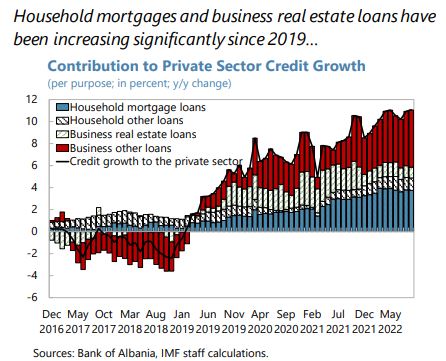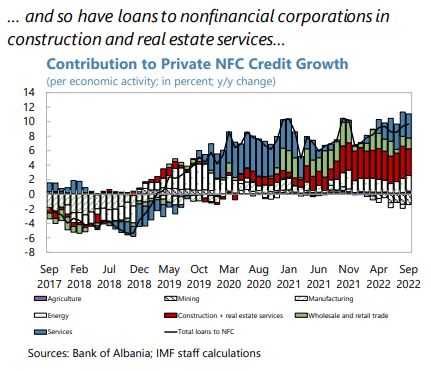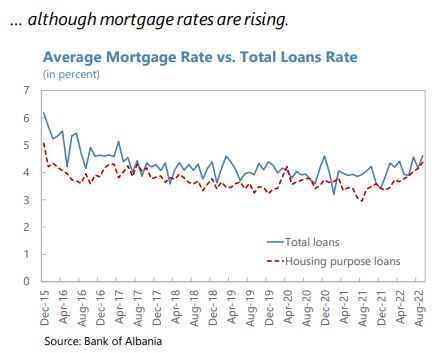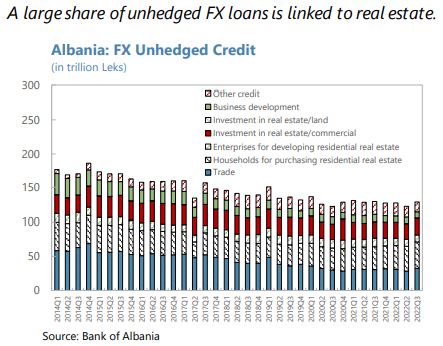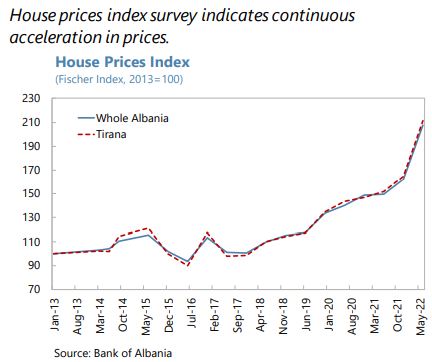Showing posts with label Global Housing Watch. Show all posts
Thursday, December 15, 2022
Housing Market Stability and Affordability in Asia-Pacific
From a new IMF Departmental Paper:
“Housing markets in the Asia-Pacific region are at an important juncture. Having risen over the past decade and during the pandemic, housing prices now appear slated for a decline in many countries. Pronounced housing cycles, which Asia-Pacific has experienced repeatedly also in the past, come at a cost. The buildup of vulnerabilities in the upswing tends to come to the fore during downturns, often with marked impacts on the broader economy. High housing prices and the prospect of increasing mortgage rates, as central banks tighten monetary policy, also imply a significant deterioration in housing affordability.
Housing prices in many countries across the region now appear misaligned, with significant downside risk to prices in the period ahead. Price surges during the pandemic, especially in the region’s advanced economies (AEs), were facilitated by low mortgage rates as central banks implemented very accommodative policy stances, along with country-specific demand and supply factors. This led to sizable price misalignment and a marked increase in downside risks to housing prices going forward, in the order of 5-20 percent in some countries. Rising interest rates will add to downside risks going forward. While the financial sectors of major AEs and emerging market economies (EMs) appear sound and would be expected to remain resilient under such shocks, close supervision is warranted for early identification of any pockets of risk.
With higher housing prices, housing affordability has become an increasing concern in the aftermath of the pandemic. Especially in the AEs, households have to stretch their wallets to be able to finance adequate housing, with an increasing share of them now overburdened by that cost. Adequate housing in many emerging market and developing economies (EMDEs) is also less affordable due to high housing prices, reflective of supply being unable to catch up with the rising demand of quickly growing populations. Poorer households in these countries are disproportionately affected.
To address the housing cycle and safeguard financial stability, macroprudential policies should be the first
line of defense. Countries in the Asia-Pacific region by now have a broad toolkit at their disposal, and policies have proven effective at mitigating housing credit growth during upswings. Within the toolkit, demand-side measures, such as loan to value (LTV) and debt service to total income (DSTI) limits, have been more effective than capital-based tools, and the effect of policy tightening during upswings has been generally stronger than stimulatory effects of policy loosening during downturns. While macroprudential measures have been effective at targeting household credit growth, they only have a limited effect on housing prices on average, and only significantly so in regional EMs. Leakages of macroprudential measures are also of concern, and policymakers should widen the regulatory perimeter where needed.
Improving housing affordability requires a multi-faceted policy approach. Facilitating a stronger supply
response will be key in many countries to address underlying imbalances. This includes reviewing land
use regulations, increasing the focus on urban planning, incentivizing the use of idle land, and providing
adequate social and affordable housing, both directly by the public sector and indirectly through incentives for private developers. But supply-side measures often take significant time to produce results, putting a premium on demand-side measures, which work more quickly. Such measures can include targeted government support, progressive taxation on property, targeted macroprudential policy to contain systemic risks while being mindful of its repercussions on lower-income households and owner-occupiers, and making use of targeted financing, insurance, and guarantee mechanisms.”
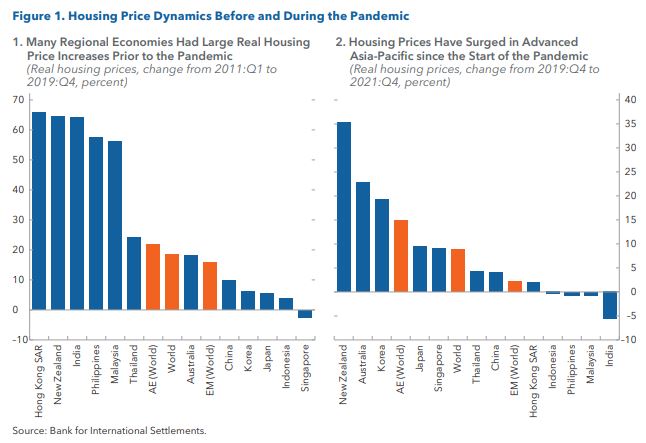
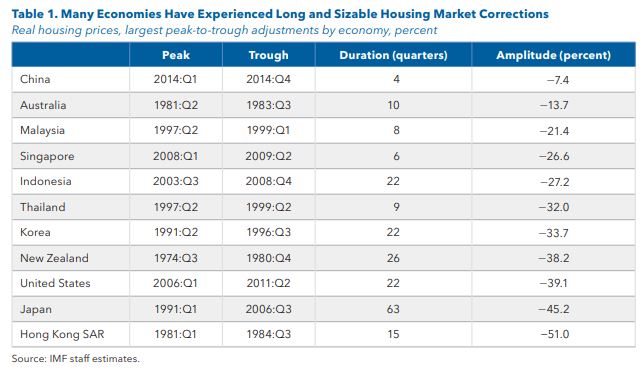
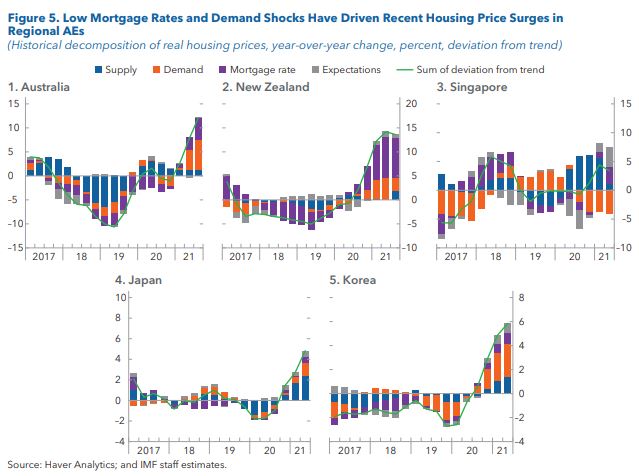
From a new IMF Departmental Paper:
“Housing markets in the Asia-Pacific region are at an important juncture. Having risen over the past decade and during the pandemic, housing prices now appear slated for a decline in many countries. Pronounced housing cycles, which Asia-Pacific has experienced repeatedly also in the past, come at a cost. The buildup of vulnerabilities in the upswing tends to come to the fore during downturns, often with marked impacts on the broader economy.
Posted by at 6:32 AM
Labels: Global Housing Watch
Housing Market in Namibia
From the IMF’s latest report on Namibia:
“Excessive loan concentration in the housing market could be a further factor constraining financial sector contribution to growth. More than 90 percent of household debt at end-2021 was in housing mortgages, representing half of all banking sector loans to the private sector. The concentration of credit provision in less productive sectors could make the growth contribution of the financial sector asymmetric, as observed in the data: limited potential for a positive contribution, but with the risk of a negative contribution during economic contractions. This risk is significant for households exposed to rising interest rates and declining real wages.”
From the IMF’s latest report on Namibia:
“Excessive loan concentration in the housing market could be a further factor constraining financial sector contribution to growth. More than 90 percent of household debt at end-2021 was in housing mortgages, representing half of all banking sector loans to the private sector. The concentration of credit provision in less productive sectors could make the growth contribution of the financial sector asymmetric, as observed in the data: limited potential for a positive contribution,
Posted by at 6:23 AM
Labels: Global Housing Watch
Saturday, December 10, 2022
Housing Market in Albania
Posted by at 6:15 AM
Labels: Global Housing Watch
Friday, December 9, 2022
House Prices in Canada
From the IMF’s latest report on Canada:
“The sharp increase in Canadian house prices, particularly during the pandemic, naturally raises the question of whether an asset price bubble was forming, or whether fundamentals explained most or all of the price run-up. Extending the analysis in Andrle and Plašil (2019), standard mortgage affordability formulas were used to link interest rates, income growth, and other household fundamentals to so-called “attainable” house prices in eleven Census Metropolitan Areas (CMAs) across Canada.
Staff analysis shows that in most locations—with the notable exceptions of Toronto and Hamilton—the change in house prices through the first half of 2021 was fully explained by households’ expanded borrowing capacity (which was driven by historically low mortgage rates and growing income). From mid-2021 onward, however, the growth in house prices in most CMAs exceeded the growth in attainable prices, suggesting some frothiness.
Even the apparent frothiness of the past eighteen months, however, is explainable if one considers
the perspective of investors. For investors, low interest rates, the expectation of economic recovery, and
broadly unchanged long-term growth expectations made prospective real estate cash flows more valuable than for the average owner-occupier. The “r-g” differential returned to its 2019 lows, and in most CMAs, the investor-implied valuation of the median house exceeded observed prices. In other words, buying real estate even at prices the median owner-occupier could not afford would still be consistent with achieving the required return on investment.
Looking forward, the projected rise in interest rates from their lows could drag attainable prices
down over 20 percent from their peak. And should regional overvaluations shrink at the same time, the
drop in actual prices could be substantially higher than this.”
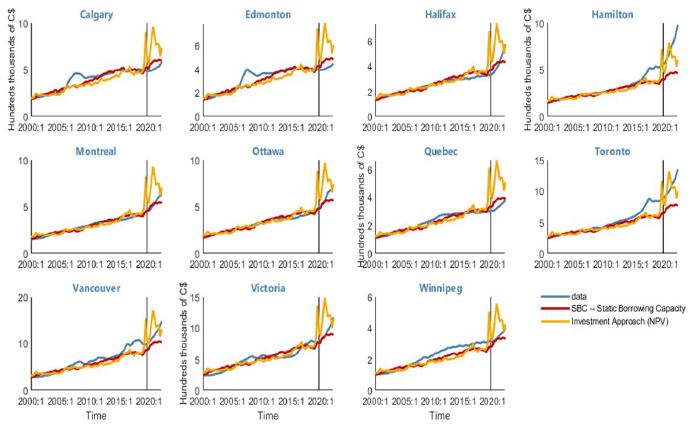
From the IMF’s latest report on Canada:
“The sharp increase in Canadian house prices, particularly during the pandemic, naturally raises the question of whether an asset price bubble was forming, or whether fundamentals explained most or all of the price run-up. Extending the analysis in Andrle and Plašil (2019), standard mortgage affordability formulas were used to link interest rates, income growth, and other household fundamentals to so-called “attainable” house prices in eleven Census Metropolitan Areas (CMAs) across Canada.
Posted by at 6:02 AM
Labels: Global Housing Watch
Housing View – December 9, 2022
On cross-country:
- Global Home Prices to See Declines or Lower Growth in 2023 – Fitch Ratings
- Global Housing and Mortgage Outlook – 2023 – Fitch Ratings
- Don’t Look Up: House Prices in Emerging Europe – IMF
- From New York to Hong Kong, how renting became unaffordable everywhere. In today’s newsletter: It’s not just the UK struggling with soaring rent and living standards – these four cities tell the story of a worldwide market in crisis – The Guardian
- Savills Global Residential Agent Sentiment Survey – Savills
- Waking a Sleeping Giant: Reflections from ADB’s 1st Asia-Pacific Housing Conference – Way Forward Housing Colatition
- How to solve the housing crisis – FT
On the US—developments on house prices, rent, permits and mortgage:
- Renters Are Finally Catching a Break. After 18 months of blistering growth, cooling demand in the housing market is forcing landlords to tone down their pricing. – Bloomberg
- U.S. house prices to fall 12% peak to trough: analysts – Reuters poll – Reuters
- Black Knight Mortgage Monitor: Home Prices Declined in October; Down 3.2% since June – Calculated Risk
- Housing Costs, Inflation’s Biggest Component, Are Poised to Ease. New rents are already softening, but that might not show up in official inflation data for months because of measurement delays – Wall Street Journal
On the US—other developments:
- What’s Going On With the Housing Market? Home buyers and sellers are trying to make sense of a downturn that’s full of contradictions: Demand has seized up but supply is still low; prices are sliding but not plummeting; and no one can agree on what comes next – Wall Street Journal
- The Economic and Housing Markets Outlook – American Action Forum
- U.S. construction spending falls in October on single family housing – Reuters
- Once-Affordable US Housing Markets Are Now Out of Reach for Most – Bloomberg
- A Big Chill Is Here for the Housing Market. Next Year Could Bring More Trouble. Affordability is still an issue, mortgage rates will remain high, and homes are sitting on the market longer. It all adds up to a stalled 2023 for real estate. – Barron’s
- Single-Family Construction Slows in Post-Covid Hot Markets – NAHB
- Q3 Update: Delinquencies, Foreclosures and REO – Calculated Risk
- Irish House Prices Set for New Records on High Rents, Tight Supply. Rents in Ireland rose almost five times EU average in 12 years. New homes have failed to keep pace with population growth – Bloomberg
- 1st Look at Local Housing Markets in November. Early reports suggest another step down in sales – Calculated Risk
- Top Housing Markets for 2023. Amid Higher Costs in 2023, Housing Markets in Affordable, Mid-Sized Manufacturing Hubs will Stay Busy – Realtor
On other countries:
- [India] India’s housing market to remain resilient, defying global downtrend: Reuters poll – Reuters
- [Germany] Germany’s housing market is facing a serious downturn in prices, analysts say – CNBC
- [Greece] Cheap loans set to give young Greeks a shot at a home of their own. Government programme will offer mortgages for as little as 1% to address an affordability crisis – FT
- [Sweden] Swedish House Prices Drop Again as Market Woes Deepen. Home prices have lost up to 13% from 2022 peak, realtor says. Nordic country’s housing market suffers as interest rates rise – Bloomberg
- [United Kingdom] The Guardian view on housing politics: a clash of false alternatives. Communities deserve better than a choice between developers’ financial interests and local nimbyism – The Guardian
- [United Kingdom] How Far Will UK House Prices Fall? The UK isn’t the most vulnerable global housing market, but a significant fall is still on the cards. – Bloomberg
- [United Kingdom] UK house prices fall at fastest rate in 14 years, says Halifax. Rising borrowing costs squeeze prospective homebuyers, sparking a 2.3% decline for November – FT
- [United Kingdom] The Optimistic View on UK House Prices. If mortgage rates stay put and the labour market remains strong, a UK house price crash isn’t a certainty – Bloomberg
- [United Kingdom] UK construction growth slows as mortgage rates hit housing market. Concerns over economic outlook and cancelled sales curtail building projects, survey finds – FT
- [United Kingdom] Britain’s ‘Jobs-Rich’ Recession May Limit Drop in Housing Market. RICS says prices and new buyer inquiries fell in November. Tight labor market means many people may remain in work – Bloomberg
- [United Kingdom] We can’t build our way out of the growing housing crisis – The Guardian
On cross-country:
- Global Home Prices to See Declines or Lower Growth in 2023 – Fitch Ratings
- Global Housing and Mortgage Outlook – 2023 – Fitch Ratings
- Don’t Look Up: House Prices in Emerging Europe – IMF
- From New York to Hong Kong, how renting became unaffordable everywhere. In today’s newsletter: It’s not just the UK struggling with soaring rent and living standards – these four cities tell the story of a worldwide market in crisis – The Guardian
- Savills Global Residential Agent Sentiment Survey – Savills
- Waking a Sleeping Giant: Reflections from ADB’s 1st Asia-Pacific Housing Conference – Way Forward Housing Colatition
- How to solve the housing crisis – FT
On the US—developments on house prices,
Posted by at 5:00 AM
Labels: Global Housing Watch
Subscribe to: Posts
